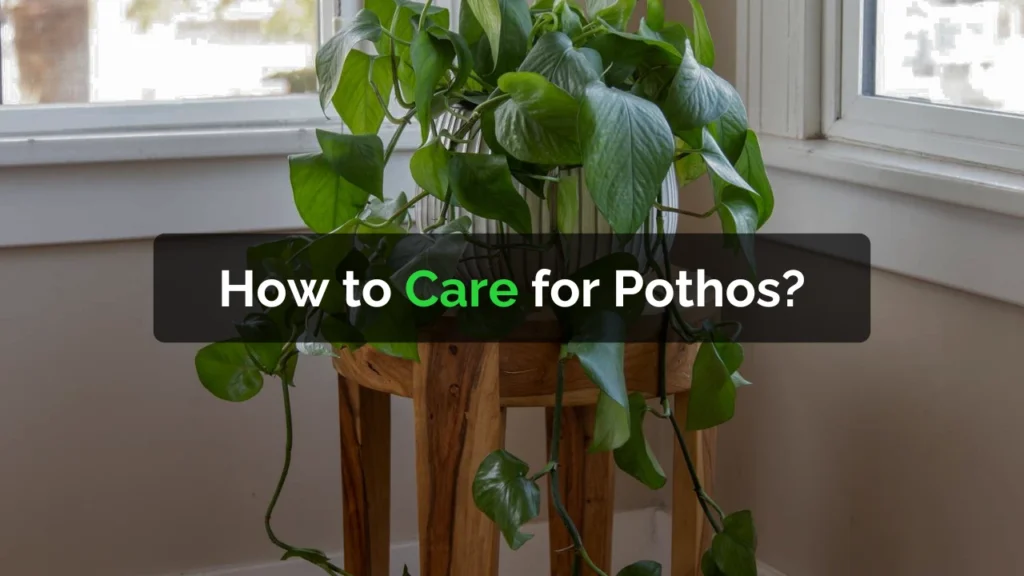Pothos, also known as Epipremnum aureum or Devil’s Ivy, is one of the most popular and low-maintenance houseplants. Its heart-shaped leaves, vibrant green color, and trailing vines make it perfect for homes and offices. Whether you are new to indoor gardening or already a plant lover, pothos is easy to care for and can thrive with minimal attention.
This guide explains how to properly care for your pothos so it stays lush and healthy all year round.
1. Light Requirements
Pothos can adapt to different lighting conditions, which makes it great for almost any space. Ideally, place your pothos in bright, indirect sunlight. It can survive in low light, but its growth will slow down and variegated leaves may lose their color. Avoid direct sunlight as it can scorch the leaves.
Tip: If your pothos is looking leggy or losing variegation, it may need more light.
2. Watering Needs
Overwatering is one of the most common mistakes when caring for pothos. The soil should be slightly dry before watering again. A simple way to check is by sticking your finger into the soil; if the top inch feels dry, it’s time to water.
Always use a pot with drainage holes to prevent root rot. In winter, reduce watering since the plant’s growth slows down.
3. Soil and Potting
Pothos prefers well-draining soil. A regular houseplant potting mix with a bit of perlite or coco peat works perfectly. Repot your pothos every 1 to 2 years when you notice roots growing out of the drainage holes.
4. Temperature and Humidity
Pothos grows best in room temperatures between 18°C and 30°C. It can tolerate average indoor humidity but will thrive even more in slightly higher humidity levels. Avoid placing the plant near air conditioners or heaters as sudden temperature changes can damage the leaves.
5. Fertilizing
Feed your pothos every 4 to 6 weeks during the growing season (spring and summer) using a balanced liquid fertilizer. Reduce feeding in fall and winter when the plant’s growth slows down.
6. Pruning and Maintenance
Regular pruning keeps your pothos looking neat and encourages new growth. Trim long or yellowing vines using clean scissors or pruning shears. You can use the cuttings to propagate new plants.
Also, wipe the leaves occasionally with a damp cloth to remove dust and allow the plant to breathe better.
7. Common Problems and Solutions
- Yellow Leaves: Usually caused by overwatering or poor drainage.
- Brown Tips: Often due to dry air or underwatering.
- Leggy Growth: Indicates the plant needs more light.
- Pests: Occasionally, pothos can attract mealybugs or spider mites. Wipe leaves with neem oil or insecticidal soap if this happens.
8. Propagation
Propagating pothos is simple. Cut a vine just below a node (where a leaf meets the stem) and place it in water. Within a few weeks, roots will appear. Once the roots are an inch or two long, transfer the cutting to soil.
9. Why Pothos Is Perfect for Beginners
- Very forgiving and adaptable
- Grows well in water or soil
- Excellent indoor air purifier
- Beautiful trailing vines ideal for hanging pots or shelves
FAQs
How often should I water my pothos?
Water your pothos when the top inch of soil feels dry. Typically, this is once a week in summer and less frequently in winter.
Can pothos grow in low light?
Yes, pothos can survive in low light, but its growth will be slower and variegation may fade.
What type of fertilizer is best for pothos?
A balanced, water-soluble fertilizer (like 10-10-10) is ideal for pothos during the growing season.
Why are my pothos leaves turning yellow?
Yellow leaves often indicate overwatering or poor drainage. Ensure the pot has holes and avoid letting the plant sit in water.
Can I grow pothos in water permanently?
Yes, pothos can live in water as long as you change the water regularly and keep the container clean to prevent algae growth.
Final Thoughts
Caring for pothos is simple, making it one of the best indoor plants for both beginners and experienced gardeners. With the right balance of light, water, and occasional pruning, your pothos will reward you with vibrant, lush growth all year long.





